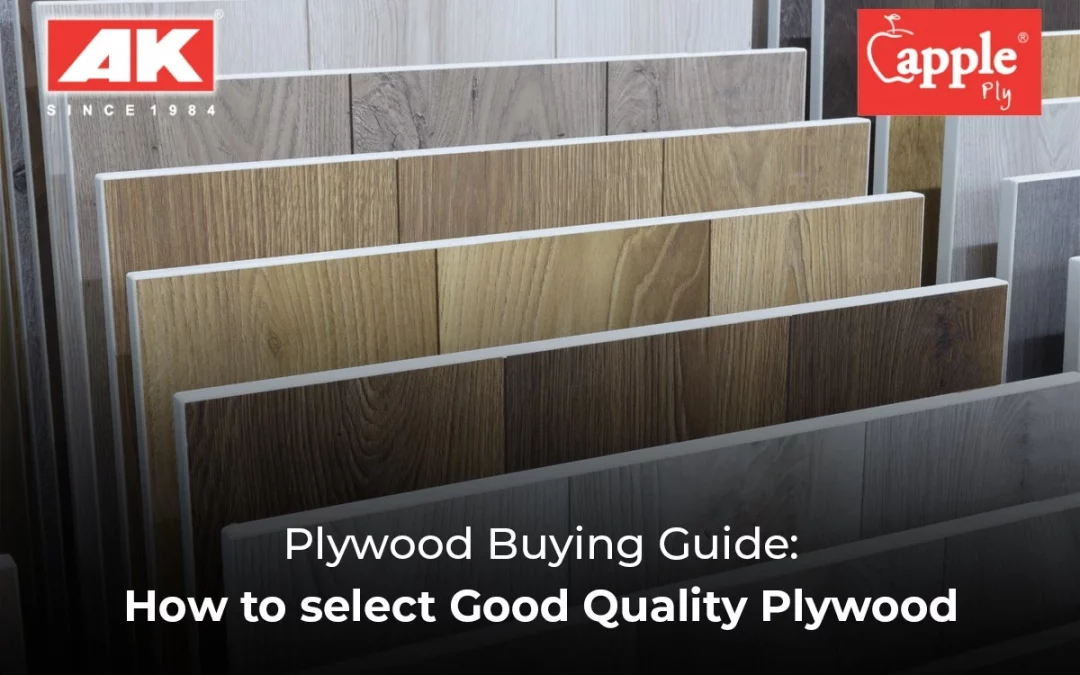In the world of construction and furniture-making, plywood is a crucial material that can make or break a project. You all will agree with this.
With numerous options available in the market, selecting the best quality plywood in India can be a daunting task. But don’t worry, we’ve got you covered!
This comprehensive plywood selection guide will walk you through the process of choosing the perfect plywood for your needs. Learn how to choose plywood that’s durable, sustainable, and meets your specific requirements.
Let’s get started on this journey to find the best plywood for your next project!
5 Key Factors to Consider When Choosing the Best Quality Plywood in India
Are you selecting the best quality plywood in India? You must consider several factors. Here are five key factors to help you make an informed decision:
1. Plywood Grade
The grade of plywood is a crucial factor in determining its quality. Here are some types of grades to know:
- Types of Grades to Know: Plywood grades range from A to D, with A being the highest quality. Understand the different grades and their characteristics to choose the best plywood for your project.
- Grading Systems to Refer: Familiarize yourself with grading systems like ISI and ISO, which ensure the plywood meets industry standards.
2. Thickness of the Plywood
The thickness of the plywood is another important factor to consider. Choose a thickness that suits your project’s requirements, taking into account factors like durability and weight.
3. Different Types of Plywood Core
The type of plywood core used can affect its strength, durability, and cost. Consider options like:
- Veneer core
- Particleboard core
- MDF core
4. Wood Species Used
The wood species used in plywood for furniture can impact its appearance, durability, and sustainability. Consider options like:
- Hardwood
- Softwood
- Engineered wood
5. Plywood Pricing and Budget
Plywood pricing can vary significantly depending on the quality, thickness, and brand. Set a budget and choose a good quality plywood that meets your needs and price range.
Related blog: Steps You Must Follow to Choose Good Quality Plywood.
Where to Use Different Types of Plywood?
Plywood is a versatile material that can be used in a variety of applications, from residential to commercial and outdoor projects. Here’s a time to explore where to use different types of plywood and how to test its quality at home.
- Residential Applications: Use good quality plywood for residential projects like furniture, cabinets, and interior decor. Best quality plywood in India is ideal for high-traffic areas and durable furniture.
- Commercial & Office Spaces: Choose commercial-grade plywood for office spaces, restaurants, and retail stores. This type of plywood is designed to withstand heavy use and foot traffic.
- Outdoor & Semi-Outdoor Uses: Use marine-grade or exterior-grade plywood for outdoor projects like garden furniture, outdoor kitchens, and semi-outdoor structures. These types of plywood are resistant to moisture and weathering.
How to Test Plywood Quality at Home?
Don’t know how to check the quality of plywood? Here are some simple tests to try at home:
- Visual Inspection: Look for any visible defects, such as knots, cracks, or uneven surfaces. Check the plywood’s texture and color for consistency.
- Boiling Water Test: Boil water and submerge a small piece of plywood in it. If the plywood starts to delaminate or show signs of damage, it may not be of good quality.
- Knife or Nail Test: Try scratching or nailing the plywood to test its density and durability. Good quality plywood should be resistant to scratches and nail holes.
- Surface Finish Test: Check the plywood’s surface finish by applying a coat of paint or varnish. A smooth, even finish indicates high-quality plywood.
Certifications and Standards You Should Know
Certifications and standards are like a badge of honor – they ensure the product meets certain quality and safety standards. Here are different certifications and standards types you need to know:
1. Indian Standards
In India, plywood manufacturers must adhere to standards set by organizations like the Bureau of Indian Standards (BIS). Look for certifications like ISI, which guarantee the plywood meets Indian quality standards.
2. Global Certifications
Global certifications like FSC (Forest Stewardship Council) ensure the plywood is sourced from responsibly managed forests. FSC certified plywood suppliers like AK Apple Plywood are committed to sustainability and environmental responsibility.
Why Certifications Matter?
Certifications matter because they:
- Ensure quality and safety
- Promote sustainability and environmental responsibility
- Provide the assurance of compliance with industry standards
AK Apple Plywood: A Certified Leader
AK Apple plywood is amongst the premium plywood brands that meets rigorous certification standards. With AK Apple plywood, you can trust that you’re getting high-quality, certified plywood that meets your needs.
New Innovations in Plywood Manufacturing
Here’s a list of latest trends in plywood manufacturing to keep you updated with the technologies to meet the demands of a changing world:
1. Eco-Friendly Plywood Options
Gone are the days of compromising on the environment. Eco-friendly plywood options are now available, made from sustainable sources and designed to reduce waste.
2. Fire-Retardant & Waterproof Plywood
Plywood that’s resistant to fire and water? Yes, it’s a game-changer! Let’s dive deeper into:
- Fire-Retardant Plywood: Designed to slow down the spread of fire, this plywood is a must-have for buildings and homes.
- BWP (Boiling Water Proof) Plywood: This waterproof plywood in India can withstand boiling water and is perfect for kitchens, bathrooms, and outdoor applications. AK Apple Ply excels here!
Also, read: Fire Retardant Plywood: The Key To Enhanced Safety In Modern Construction.
How to Spot Fake or Low-Quality Plywood?
Don’t get deceived by fake or low-quality plywood! You can easily spot the difference between the fake and the genuine ones. Know how? Here are some tips to spot the difference:
1. Check for Voids & Uneven Layers
Inspect the plywood for any voids or uneven layers. Best quality plywood in India should have a smooth, consistent surface.
2. Tap & Flex Test
Tap the plywood gently and check for any hollow sounds. Flex the plywood to test its strength and durability.
3. Stamps and Certifications
Look for stamps and certifications from reputable organizations. These ensure the plywood meets industry standards and is of high quality.
Related blog: How to Spot the Difference Between Fake vs Genuine Plywood?
Empower Your Plywood Purchases with AK Apple Ply
You always want the best quality and value for your money and AK Apple Ply is a trusted brand that offers a wide range of plywood products, including the best quality plywood in India. With AK Apple Ply, you can:
- Buy plywood online India with ease and convenience
- Choose from a variety of plywood products that meet your specific needs
- Trust the quality and durability of AK Apple Ply’s products
By choosing AK Apple Ply, you’re not just buying plywood – you’re investing in a product that’s built to last. Empower your plywood purchases with AK Apple Ply and experience the difference for yourself.
Buy Now and Get Exclusive Offers!
Visit AK Apple Ply’s website today and buy the best quality plywood in India online. Don’t miss out on our exclusive deals and discounts!
Click Here to Buy Now and Get Started!
Frequently Asked Questions (FAQs)
1. What is the difference between MR and BWP plywood?
MR plywood is moisture-resistant, while BWP plywood is boiling water proof. BWP plywood is ideal for applications where high moisture exposure is expected.
2. Which is better for furniture plywood or MDF?
It depends on the project requirements. Plywood is generally stronger and more durable, while MDF is smoother and more affordable. Best quality plywood in India is a popular choice for furniture-making due to its strength and durability.
3. How can I verify if plywood is termite-resistant?
Look for certifications and treatments that indicate termite resistance. Best quality plywood in India often comes with termite-resistant treatments or certifications.
4. Does plywood warp over time?
Plywood can warp over time due to moisture, humidity, or poor storage. However, the best quality plywood in India is designed to minimize warping and ensure long-term durability.
5. Is waterproof plywood 100% waterproof?
Waterproof plywood is designed to resist water damage, but it’s not 100% waterproof. It’s essential to follow manufacturer guidelines and apply additional coatings or sealants to ensure maximum protection.




